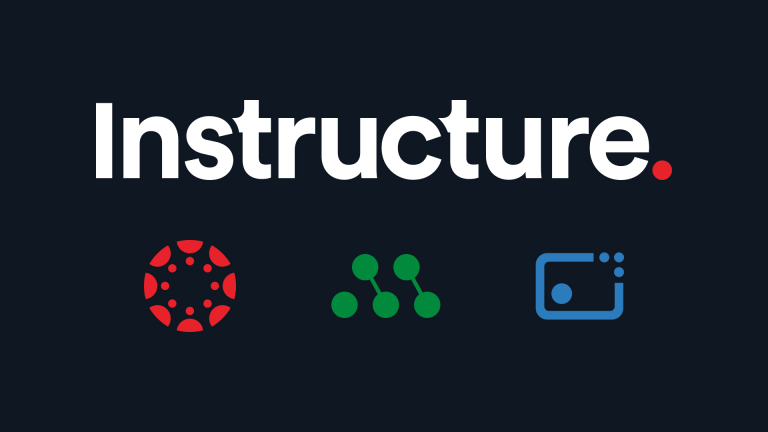Miami Dade College (MDC) was looking for ways to foster a more engaging virtual learning experience and to establish an integrated, intuitive EdTech ecosystem for students and staff. They are one of the largest and most diverse institutions in the United States, with eight different campuses, over 100,000 students, and more than 300 distinct degree pathways. And with 10,000 students enrolled in synchronous online courses, student experience is critical to their continued success. Without the right tools, however, developing a meaningful experience for virtual and distance learners can be a significant challenge.
“Learner engagement is really important inside and outside of the classroom,” begins Mariah Schuemann, Instructional Designer at MDC. “If they’re not engaged, they’re sleeping, checking [their] phones, maybe cooking lunch—especially in the virtual spaces. So how do we keep students accountable in virtual spaces when it’s obviously more challenging than in in-person traditional classrooms?”
Already Canvas users, it was important to MDC that any learner engagement solutions they evaluated seamlessly integrated with their LMS. Enter Class. With Class, MDC felt they had found the right online learning platform to deliver a more intuitive education experience for students and instructors, with the unique tools needed to bring online classes to life.
Bringing Canvas Content to Life
With traditional video conferencing, it can be difficult for learners to feel connected to their peers and instructors. Exercises are ignored, cameras are off, and the “classroom” feel is no longer present. Class’s collaborative tools let learners actively engage in a way that replicates the in‑person experience.
“I’ve been working in online education for nearly a decade, and I’ve seen a lot of web conferencing tools,” adds Miguel Suarez, Senior LMS Support Analyst at MDC. “What I like most about Class is that it’s more student-focused and student-centered than any of the other web conferencing tools that I’ve seen integrated in other learning management systems. The integration of Class with our LMS has been a breeze mainly because of the attention by the folks at Class that we work with directly, the knowledge base that’s available to us through Class, and the low learning curve for those using the tool.”
With Class, MDC is able to bring lessons to life by creating scalable, engaging learning experiences using features like:
- Interactive content—like whiteboards, videos, and more—and browser-based tools and webpages accessed directly within Class
- Enhanced breakout rooms that allow instructors to send unique content and assignments to individual rooms with the ability to observe all rooms at once
- Live annotations to mark up and draw on shared presentations, whiteboards, and more
Simplifying Instructional Workflows
Class’s enhanced LMS integration with Canvas simplifies the workflow for instructors by allowing them to launch Class directly from Canvas. Instructors can also automate their course setup, section scheduling, and rostering directly from their Canvas environment. These features make the experience much simpler for instructors and students alike.
Says Guillermo Ardon, Lead Academic Technologist at MDC, “Class’s enhanced integration [with Canvas]...allows the instructor to stay within that virtual environment, engaging their students, but still being able to pull these resources from within their course. So they're not stepping away from the classroom to share a screen or look through files. Everything that is built into that course, it's available at their fingertips."
The ability to deploy Canvas content directly into Class has dramatically improved the learning experience at MDC, helping instructors save time and leverage Class’s capabilities to breathe new life into their LMS content.
Reducing Administrative Burden
Administrative tasks can add unnecessary burdens on instructors, especially when incompatible technologies are used for distance learning. Attendance must be kept updated, activities need to be tracked, and grades need to be copied into other systems of record. A key aspect of the deep integration between systems is the ability to seamlessly pass completion and grades back into Canvas as soon as activities take place in Class.
“In the virtual format, the process of taking attendance is usually cumbersome. I don’t have to worry about that anymore with Class [and Canvas],” shares Logan Saucer, Adjunct Faculty Member at MDC. “The student is automatically recognized as someone who is enrolled from my roster, which is updated on a regular basis through Canvas. So not only am I sure that the students there are the ones who are supposed to be there, but I’m also able to make sure from one class period to the next that I have an accurate attendance that doesn’t require any input on my part at all.”
By centralizing learner performance data within Canvas, MDC can reduce the administrative burden placed upon instructors and ensure their focus is on their students and lessons.
Join Us for a Webinar
Interested in learning more about how Class’ learner engagement solution can supercharge online courses delivered via Canvas? Join us for a webinar on bringing your Canvas content to life with Class’s next-generation virtual classroom. Hear first-hand perspectives around the strategy and tactics that K-12 and Higher Education institutions are deploying to usher in the next generation of online learning.
Date: November 14, 2024
Time: 2pm ET (11am PT)
Related Content
 inst-3step.jpg
inst-3step.jpgBlogs
 educause_recap.jpg
educause_recap.jpgBlogs
 inst-default
inst-defaultBlogs
